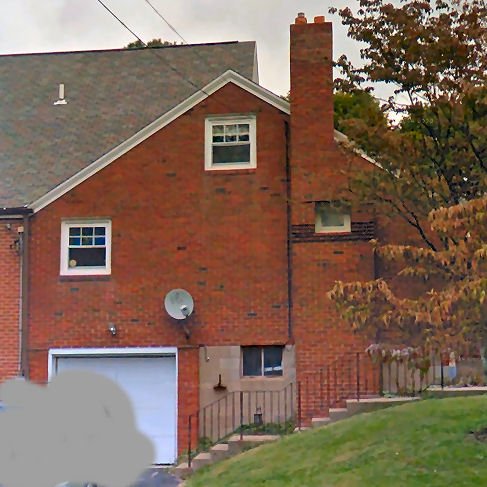-
Posts
2,905 -
Joined
-
Last visited
Content Type
Profiles
Forums
Gallery
Events
Everything posted by thibaultron
-

3D-printing for modellers?
thibaultron replied to Jean-Pierre's topic in Modeling tools and Workshop Equipment
Just shapeways, for now. A 3D printer is on the list, but I need to finish my shop renovation first. -

3D-printing for modellers?
thibaultron replied to Jean-Pierre's topic in Modeling tools and Workshop Equipment
I use SketchUp as my main 3D software, with DesignCAD as my drafting software. I have a thread on going from 2D to 3D that I did last year, in the forum, see my signiture below. What you can print, depends on the size of the parts. I was able to 3D print hand powered oyster dredge winches, about 3 X 2 foot, in 1/64th scale, but not the pipe dredge frames. For Shapeways the minimum floor/wall thickness, in their Frosted Detail plastic is .3mm, with wire minimum about 3X that thick. Long thin parts have a tendency to warp. I've also printed HO scale steam locomotive tender frames, in one of their cheaper plastics, and oil hatches for the tender tank top. -

Fokker Dr.I by Torbogdan - FINISHED - Model Airways
thibaultron replied to Torbogdan's topic in Non-ship/categorised builds
For the less machine tool gifted, how about stacked disks, alternating large and small dia.? -
I think the "temp" label refers to the bolt pointed to by the arrow. The outer timbers may be free floating, and serve only to tie the side and transom planking together at the corner.
-

April 10, 1963 - USS Thresher tragedy
thibaultron replied to torpedochief's topic in Nautical/Naval History
May they rest in peace!! -
The frames were out by 1/16", or 2" in real life. I don't doubt that this may not have been true on the real boat, and probably fixed in much the same way. Years ago while living in MD. I read an article on a local large wooden boat builder, one of the last in the area. He said that all the boats he built, and all of the ones he knew about were asymetriacal by a fair amount, that modern ship builders would be surprised by. The nature of wood construction.
-

Need tips on deadeyes rigging
thibaultron replied to Tallsails2's topic in Masting, rigging and sails
In model railroading we have a saying. "There is a prototype for everything!" We also have a saying, "Never put a window in a chimney!" A couple weeks ago I posted this picture, on my Railroad Forum: When I was a teenager, I passed this house everyday going to school, and just looked it back up on GOOGLE Maps. Having said that, you also have to consider your viewer. Sometimes making a model realistic, can also make it look odd, or unfinished. In the end, however, it is up to you, what you want in your model. -
BTW. I have the HMS Alert kit from the same manuf. The smaller 1/96th scale, non laser kit.
-
The only thing about the kit, is I would reca0end not applying the copper tape. A US/Colonial ship of that period, was unlikely to be coppered. The British were just starting to copper their warships about this time (1780). Coppering was very expensive, and experimental at this stage. A private builder was unlikely to be using it. I will be following this build. I love the Baltimore Clipper type ships!
-

RIGGING THE ROYAL WILLIAM
thibaultron replied to piratepete007's topic in Masting, rigging and sails
It will likely be Mon. before I can start. Have to work the next 3 days. -

RIGGING THE ROYAL WILLIAM
thibaultron replied to piratepete007's topic in Masting, rigging and sails
I'll read through the whole thing in the next few days. -

RIGGING THE ROYAL WILLIAM
thibaultron replied to piratepete007's topic in Masting, rigging and sails
What a wonderful resource! Thanks for your effort! -

Fokker Dr.I by Torbogdan - FINISHED - Model Airways
thibaultron replied to Torbogdan's topic in Non-ship/categorised builds
My thoughts on the paint/no paint options. If you were building a plastic model of, say a model "T", or a ship, would you leave it the raw plastic color, or would you paint it? I would leave the wood parts with a clear coat, and paint the other parts the correct historical colors. -
They make stuff you can brush on rotten wood trim to harden it. Then you use filler to restore the surface. This has fungicide in it. It is thin and soaks into the wood. Maybe these compounds would work. I think one brand was Dr. Wood.
-
For the problem that the surface in contact with the balloon/bag is smooth, perhaps cover the "mold" with similar cloth, apply the paint/epoxy, etc., let it set then spray it with some sort of mold release. After that put the real sail on. that way the mold surface would be textured, not smooth, and both sides of the sail would be textured.
-

My Spray Booth Construction
thibaultron replied to thibaultron's topic in Modeling tools and Workshop Equipment
Here are some pictures of the finished spray booth: These are a couple of pictures of the airbrush mount, and the regulator mount. The short length of glue strip is there as the regulator mount screws were longer than the ply was thick. I made a temporary dust cover for the booth out of a couple boxes, that I used as drop “cloths” while painting the booth. -

A method for making panelled sails using paper
thibaultron replied to Cathead's topic in Masting, rigging and sails
Thanks for this tutorial! I think I'll use this method for my 1/64th Skipjack, that I may even have time to get back to soon.- 49 replies
-
- sails
- sail panels
-
(and 1 more)
Tagged with:
About us
Modelshipworld - Advancing Ship Modeling through Research
SSL Secured
Your security is important for us so this Website is SSL-Secured
NRG Mailing Address
Nautical Research Guild
237 South Lincoln Street
Westmont IL, 60559-1917
Model Ship World ® and the MSW logo are Registered Trademarks, and belong to the Nautical Research Guild (United States Patent and Trademark Office: No. 6,929,264 & No. 6,929,274, registered Dec. 20, 2022)
Helpful Links
About the NRG
If you enjoy building ship models that are historically accurate as well as beautiful, then The Nautical Research Guild (NRG) is just right for you.
The Guild is a non-profit educational organization whose mission is to “Advance Ship Modeling Through Research”. We provide support to our members in their efforts to raise the quality of their model ships.
The Nautical Research Guild has published our world-renowned quarterly magazine, The Nautical Research Journal, since 1955. The pages of the Journal are full of articles by accomplished ship modelers who show you how they create those exquisite details on their models, and by maritime historians who show you the correct details to build. The Journal is available in both print and digital editions. Go to the NRG web site (www.thenrg.org) to download a complimentary digital copy of the Journal. The NRG also publishes plan sets, books and compilations of back issues of the Journal and the former Ships in Scale and Model Ship Builder magazines.



